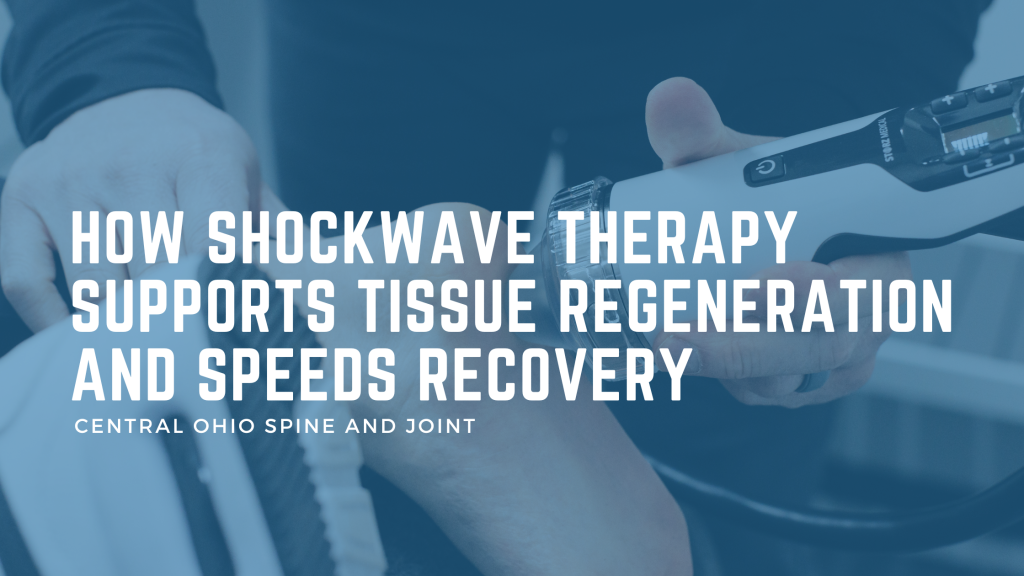
Recovering from chronic pain, injuries, or degenerative conditions can often feel like an uphill battle. For years, patients have relied on medication, Rehab Specialist, or invasive procedures like surgery to find relief and regain function. However, a cutting-edge, non-invasive treatment is changing the way we approach recovery: Shockwave Therapy. This revolutionary therapy not only alleviates pain but also promotes tissue regeneration and accelerates the healing process.
In this post, we’ll delve into the science behind Shockwave Therapy, its role in tissue regeneration, and how it speeds recovery for various conditions.
What Is Shockwave Therapy?
Shockwave Therapy, formally known as Extracorporeal Shockwave Therapy (ESWT), involves the use of acoustic waves to target damaged tissues in the body. These high-energy sound waves penetrate deep into tissues, creating mechanical stimulation that triggers the body’s natural healing processes.
There are two main types of Shockwave Therapy:
- Radial Shockwave Therapy (R-SWT): Disperses energy over a broader area, ideal for superficial conditions.
- Focused Shockwave Therapy (F-SWT): Delivers precise, concentrated energy to deeper tissues, making it suitable for chronic and complex injuries.
Both types of therapy are effective in reducing pain, improving mobility, and most importantly, regenerating damaged tissues.
The Science Behind Tissue Regeneration
The human body has an incredible ability to repair itself. However, in cases of chronic pain or severe injuries, the healing process may be slow or incomplete. Shockwave Therapy steps in to enhance this natural process by:
1. Stimulating Cellular Repair
When acoustic waves penetrate tissues, they create microtrauma that stimulates cellular activity. Specifically, the therapy activates fibroblasts and stem cells, which are crucial for the regeneration of connective tissues such as tendons, ligaments, and muscles.
2. Promoting Angiogenesis
Shockwave Therapy enhances the formation of new blood vessels (angiogenesis) in the treated area. Improved blood flow delivers oxygen and nutrients to damaged tissues, accelerating repair and reducing inflammation.
3. Collagen Production
Collagen is a key protein that provides structure and strength to tissues. Shockwave Therapy encourages the production of new collagen, helping rebuild damaged areas and restore their function.
4. Breaking Down Scar Tissue
In cases of chronic injuries, scar tissue often forms and limits mobility. Shockwave Therapy helps break down this fibrotic tissue, allowing for proper tissue remodeling and improved flexibility.
How Shockwave Therapy Speeds Recovery
Whether you’re recovering from an acute injury or managing a long-term condition, Shockwave Therapy offers a host of benefits that accelerate the healing process. Here’s how:
1. Reducing Inflammation
Inflammation is the body’s natural response to injury, but chronic inflammation can hinder recovery. Shockwave Therapy reduces pro-inflammatory markers while promoting anti-inflammatory cytokines, creating a more balanced environment for healing.
2. Improving Mobility and Function
By breaking down calcifications and scar tissue, Shockwave Therapy restores the elasticity and function of tissues. This is particularly beneficial for conditions like tendinopathy or plantar fasciitis, where stiffness and limited mobility are common.
3. Relieving Pain
One of the immediate effects of Shockwave Therapy is pain reduction. It desensitizes nerve endings and interrupts pain pathways, providing relief that allows patients to move more freely and engage in rehabilitation exercises.
4. Accelerating Bone Healing
For patients with stress fractures or delayed union fractures, Shockwave Therapy stimulates osteoblasts (bone-forming cells) to accelerate bone regeneration and repair.
Conditions That Benefit from Shockwave Therapy
Shockwave Therapy is highly versatile and can treat a wide range of musculoskeletal and soft tissue conditions, including:
- Plantar Fasciitis: Chronic heel pain caused by inflammation of the plantar fascia.
- Tendinopathy: Conditions like tennis elbow, Achilles tendinitis, and rotator cuff injuries.
- Calcific Tendinitis: Calcium deposits in tendons, particularly in the shoulder.
- Stress Fractures: Non-invasive treatment for bone healing.
- Myofascial Pain Syndrome: Trigger points and muscle tension.
- Delayed Union Fractures: Promotes bone healing where traditional treatments have failed.
What to Expect During Treatment
If you’re considering Shockwave Therapy, here’s what a typical session looks like:
- Consultation: Your provider will evaluate your condition and determine if Shockwave Therapy is right for you.
- Preparation: A gel is applied to the treatment area to enhance the transmission of acoustic waves.
- Treatment: A handheld device delivers shockwaves to the targeted area. The intensity and frequency can be adjusted based on your comfort level.
- Duration: Each session lasts approximately 10-20 minutes.
- Post-Treatment: You may experience mild redness or soreness, which typically resolves within 24-48 hours.
Most patients require 3-5 sessions, spaced about a week apart, for optimal results.
Advantages of Shockwave Therapy
Shockwave Therapy stands out as a preferred treatment option due to its many advantages:
- Non-Invasive: No incisions or injections required.
- Minimal Side Effects: Most patients experience only mild discomfort during and after treatment.
- Quick Recovery: Little to no downtime, allowing you to return to daily activities immediately.
- High Success Rates: Studies report significant improvement in pain and function for 70-90% of patients.
- Cost-Effective: Compared to surgery, Shockwave Therapy is often more affordable and less risky.
Is Shockwave Therapy Right for You?
Shockwave Therapy is a safe and effective option for most individuals, but it may not be suitable for everyone. Contraindications include:
- Blood clotting disorders
- Use of anticoagulant medications
- Pregnancy
- Active infections
- Presence of pacemakers or implanted devices
Your provider will assess your medical history and condition to ensure this treatment is appropriate for you.
Take the Next Step Toward Recovery
At Central Ohio Spine and Joint, we’re committed to providing innovative, evidence-based treatments like Shockwave Therapy to help our patients achieve optimal health and function. Whether you’re dealing with chronic pain, an injury, or slow-healing tissues, Shockwave Therapy could be the solution you’ve been searching for.
Contact us today to schedule a consultation and find out how Shockwave Therapy can support your recovery and restore your quality of life.

Recent Comments